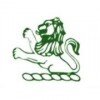Filter interviews by
Meneta Automotive Components Interview Questions and Answers
Meneta Automotive Components Interview Experiences
15 interviews found
(1 Question)
- Q1. Calculate the tonnage for press machine
- Ans.
Tonnage for press machine can be calculated using the formula: Tonnage = (Thickness of material * Width of material * Ultimate tensile strength) / 1000
Calculate the thickness of the material being used
Determine the width of the material
Find out the ultimate tensile strength of the material
Use the formula: Tonnage = (Thickness * Width * Ultimate tensile strength) / 1000
I appeared for an interview in Feb 2025.
(1 Question)
- Q1. How to design progressive tool
- Ans.
Designing a progressive tool involves creating a multi-stage die for efficient metal forming processes.
Understand the material properties: Choose materials like steel or aluminum based on strength and ductility.
Define the part geometry: Create detailed CAD models to visualize the final product.
Determine the number of stages: Plan how many operations are needed to achieve the desired shape.
Select the right tooling: Use ...
I appeared for an interview in Feb 2025, where I was asked the following questions.
- Q1. What skills do you utilize in your work?
- Q2. What are the qualifications required for this position?
(2 Questions)
- Q1. Profile details ?
- Q2. Technical analysis ?
Interview Preparation Tips

(2 Questions)
- Q1. Normal question regarding die maintenance like Punch and die clearance Die material Progressive Die and compound die difference Pilot pin purpose Lifter purpose Pilot pin and piercing punch clearance diff...
- Q2. Same as jo uper me likha hai
Interview Preparation Tips
(1 Question)
- Q1. What is enthalpy
- Ans.
Enthalpy is a thermodynamic property that represents the total heat content of a system.
Enthalpy is denoted by the symbol H and is defined as the sum of the internal energy of a system plus the product of pressure and volume.
It is used to quantify the amount of heat absorbed or released by a system during a process.
Enthalpy change (∆H) is commonly used in chemical reactions to determine if a reaction is exothermic (rel...
I applied via Company Website and was interviewed in Nov 2022. There were 2 interview rounds.

(2 Questions)
- Q1. Current salery status check & Experience letter check
- Q2. Why are you leaving in current job
Interview Preparation Tips
I applied via Approached by Company and was interviewed before Apr 2022. There were 2 interview rounds.

(2 Questions)
- Q1. Phala kha kam kiya ha
- Ans.
Phala kha kam kiya ha translates to 'What work have you done?' It invites a discussion about past experiences and achievements.
Discuss specific projects you've completed, such as leading a team to success in a marketing campaign.
Mention any relevant skills you've developed, like proficiency in software or tools related to your field.
Share examples of challenges you've overcome, such as resolving a conflict within a tea...
- Q2. Kam kar sakta hoo ya nhi
(3 Questions)
- Q1. Remove the brake pads in caliper
- Ans.
Removing brake pads from a caliper involves several steps to ensure safety and proper installation.
1. Lift the vehicle and secure it on jack stands for safety.
2. Remove the wheel to access the brake caliper.
3. Locate the caliper mounting bolts and remove them using a socket wrench.
4. Carefully slide the caliper off the rotor, ensuring not to damage the brake line.
5. Remove the old brake pads from the caliper bracket, n...
- Q2. Problems in master cylinder in hydraulic brake system
- Q3. All indian motor fittings in brakes system
Interview Preparation Tips
I applied via Naukri.com and was interviewed before Oct 2022. There were 3 interview rounds.

Basic JD production related questions
(1 Question)
- Q1. Basic salery details, why should you hire
Interview Preparation Tips
(3 Questions)
- Q1. Tell me about yourself.
- Q2. I am responsible work
- Q3. Good fasliti
Interview Preparation Tips
Top trending discussions






Meneta Automotive Components Interview FAQs
The duration of Meneta Automotive Components interview process can vary, but typically it takes about less than 2 weeks to complete.
Tell us how to improve this page.
Meneta Automotive Components Interviews By Designations
- Meneta Automotive Components Production Engineer Interview Questions
- Meneta Automotive Components Engineer Interview Questions
- Meneta Automotive Components Logistics Executive Interview Questions
- Meneta Automotive Components Production Interview Questions
- Meneta Automotive Components Operator Interview Questions
- Meneta Automotive Components Design Engineer Interview Questions
- Meneta Automotive Components Agency Manager Interview Questions
- Meneta Automotive Components PPC Engineer Interview Questions
- Show more
Interview Questions for Popular Designations
Overall Interview Experience Rating
based on 16 interview experiences
Difficulty level
Duration
Interview Questions from Similar Companies
Meneta Automotive Components Reviews and Ratings
based on 197 reviews
Rating in categories
|
Assistant Manager
52
salaries
| ₹4.7 L/yr - ₹8.5 L/yr |
|
Senior Engineer
52
salaries
| ₹3.3 L/yr - ₹6.6 L/yr |
|
Engineer
41
salaries
| ₹2.8 L/yr - ₹5.5 L/yr |
|
Quality Engineer
29
salaries
| ₹2.4 L/yr - ₹4.8 L/yr |
|
Deputy Manager
18
salaries
| ₹7.4 L/yr - ₹11.4 L/yr |

Ag Industries

Toyoda Gosei Minda

Global Autotech

Mikuni
- Home >
- Interviews >
- Meneta Automotive Components Interview Questions













